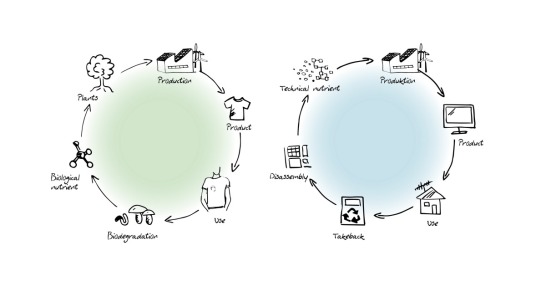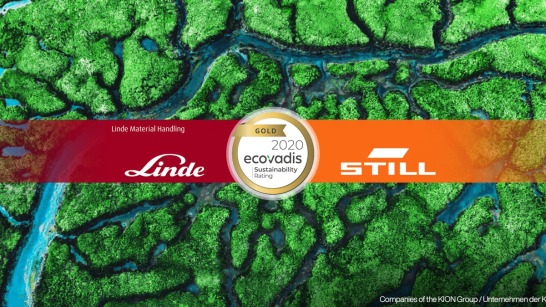2022-08-03
Refurbishment of Lithium-Ion Batteries and Forklift Trucks
Lithium-ion batteries have a pivotal role to play in the intralogistics of tomorrow: They are sustainable, operate with high levels of efficiency, and have a lifespan of many years. The KION Group is committed to Li-ion batteries and e-mobility: Almost 90% of all industrial trucks it sells are electrically powered. KION New Energy Solutions is running a lighthouse project, in which lithium-ion batteries are to be used for as long as possible. Refurbishing batteries and industrial trucks enables the KION Group to create sustainable cycles and meet the challenges of tomorrow, today.

Lithium-ion batteries have been an integral part of the KION Group's portfolio since 2016. They are sustainable, offer interim charging, and boast a charge efficiency of over 95%—a key building block in the intralogistics of tomorrow. In 2020 the KION Group brought technology in-house to enable it to develop better batteries and products even faster: With the joint venture KION Battery Systems (KBS), the global intralogistics group took the production of lithium-ion batteries for industrial trucks into its own hands. Just this year, capacities were significantly increased once more with the addition of a second production line . Annual production capacity now comprises some 30,000 lithium-ion batteries. With their long lifespan and high efficiency levels, they can remain in use for years, even when used in intensive multiple-shift operation.
Finding Solutions Today for the Challenges of Tomorrow
Thanks to the durability of the battery system, hardly any lithium-ion batteries have been returned so far. There is only a slow trickle of units returning from their first assignments. Despite the low numbers so far, the KION Group is already starting work on the solutions for tomorrow. The main question for the long term is: What is the best way to handle the energy storage devices when they reach the end of their original use? What solutions can we offer in order to further reduce carbon footprint? In the search for solutions, the KION Group is considering the issue of sustainability from all angles. This is because experts at KION are certain that they can still get more out of the batteries. Now the aim is to fully exploit their potential as part of a lighthouse project. The objective is to use energy storage devices in their application, the industrial truck, for as long as possible. “Generally speaking, leasing contracts run for three to five years. Depending on the operating conditions, we would, however, expect a lifespan of over 10 years,” says Matthias Bald, a battery expert and employee in the Energy Solutions Division at KION ITS EMEA. Batteries used in the field therefore have a high reuse potential.

Lithium-ion batteries are sustainable, offer interim charging, and boast a charge efficiency of over 95%—a key building block in the intralogistics of tomorrow.
Before Reuse Comes Refurbishment
In order to understand how batteries can be refurbished, it's worth taking a look at their inner workings. Lithium-ion cells are welded together to form modules, which are then housed in a black, monolithic casing. It is often enough to give the batteries a superficial aesthetic overhaul and only replace components such as gaskets or plugs. Sometimes, however, a more extensive refurbishment process is required, which involves replacing individual cell modules. “The Li-ion battery’s consistent modular structure makes the refurbishment process considerably easier. The vision of sustainability was part of the battery’s design concept from the start,” explains Matthias Bald. He sees huge potential for refurbishment here: “A Li-on battery should be returned two to three times before it can no longer be installed in an industrial truck.” In concrete terms, this means that every lithium-ion battery should undergo two to three of these reprocessing cycles.

A Li-on battery should be returned two to three times before it can no longer be installed in an industrial truck.
Linde Rental Service the Perfect Petri Dish for the Lighthouse Project
Refurbishment facilitates a re-use concept, which enables battery use to be maximized. There are also plans to carry out battery refurbishment at KION Battery Systems in Karlstein am Main, the battery's birthplace. For the experts, this raises several questions: How can the battery be assessed quickly and cost-effectively? How intensively was the battery used by the customer? Where is the damage? How extensive is the wear? And how much capacity can still be extracted from the energy storage device? The battery is examined, and its technical performance determined. Based on this diagnosis, a simple or comprehensive refurbishment then follows. The process takes just a few days to complete, and afterwards it is hard to tell the difference between the refurbished battery and a new one.
The battery pool of Linde Material Handling Rental Services GmbH was selected in the search for a suitable testing ground for the refurbished energy storage devices. Li-ion batteries and electric forklift trucks at the rental and leasing business remain the property of the KION Group. This means that the team has easy access to battery systems. This provides the necessary framework that enables KBS experts to gain important knowledge and experience regarding the refurbishment process. The experience amassed as part of this process will pay dividends in the long term, with the use of refurbished batteries set to become much more widespread in the near future.
Sustainable Vision of the Future: Refurbished Batteries in Refurbished Forklifts
The sustainable cycles being tested as part of this project are set to be scaled up in the long term. Going forward, they will also be put to use in a range of areas, including one in which the KION Group has already amassed experience over the years, i.e., industrial truck refurbishment. In Poznań, Poland, for example, the KION brand STILL has been restoring used forklift trucks, pallet trucks, and warehouse trucks to almost-new standard since back in 2011. Buckled metal is fixed and rewelded, worn tires are replaced and a new coat of paint is applied—a time-consuming process carried out with a great deal of know-how. The advantages that used forklifts like these offer customers are obvious: lower price points, immediate availability, and high quality. It’s a similar story in Velké Bílovice, Czechia, where—at its 14,800-m2 Remanufacturing Center—KION brand Linde MH EMEA refurbishes more than 5,000 trucks each year and also equips them ex works with extra features (e.g., the Linde Blue Spot warning system) at the customer's request, bringing real added value to the customer base.

The Li-ion battery’s consistent modular structure makes the refurbishment process considerably easier.
Another example of how knowledge is shared within the group. In the opinion of Bernd Roth from KION ITS EMEA, the topic of refurbishment needs to be viewed from a holistic perspective: “Our ultimate aim is for used forklifts to be fitted with a refurbished battery, too.” This would allow the KION Group to close the sustainability cycle: A holistic refurbishment, with used forklifts accommodating refurbished batteries, is next on the list for batteries. For customers, this presents no disadvantages whatsoever—refurbished batteries and industrial trucks are tailored to their needs and the respective framework for use.
However, batteries do reach the end of their life at some point. What happens when an energy storage device has gone through its reprocessing cycles? The KION Group attaches as much importance to the issue of recycling as it does to refurbishment. Its researchers and developers are working flat out to find an answer to this question on the destiny of cell materials. Their initial attempts are promising. Until they can offer a comprehensive solution, the KION Group is putting the necessary processes in place to maximize the use of lithium-ion batteries and to lengthen their life cycles. This ensures the Group’s carbon footprint remains as low as possible and that it moves closer toward a vision of a sustainable energy supply for intralogistics.

